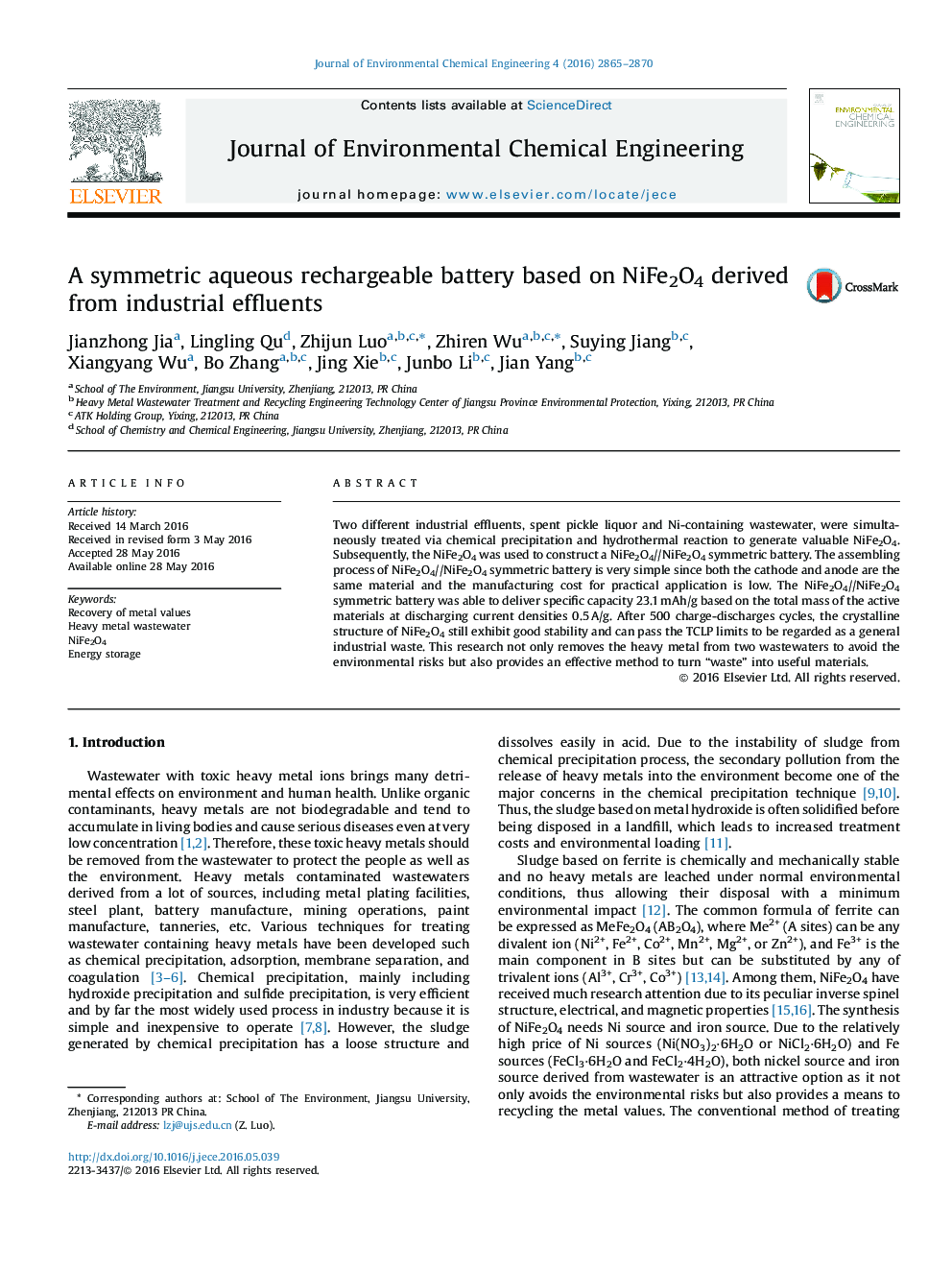| کد مقاله | کد نشریه | سال انتشار | مقاله انگلیسی | نسخه تمام متن |
|---|---|---|---|---|
| 221553 | 464260 | 2016 | 6 صفحه PDF | دانلود رایگان |
• NiFe2O4 derived from spent pickle liquor and Ni-containing wastewater.
• The assembling process of NiFe2O4//NiFe2O4 symmetric battery is very simple since both the cathode and anode are the same material.
• After 500 charge-discharges cycles, the crystalline structure of NiFe2O4 still exhibit good stability and can pass the TCLP limits.
Two different industrial effluents, spent pickle liquor and Ni-containing wastewater, were simultaneously treated via chemical precipitation and hydrothermal reaction to generate valuable NiFe2O4. Subsequently, the NiFe2O4 was used to construct a NiFe2O4//NiFe2O4 symmetric battery. The assembling process of NiFe2O4//NiFe2O4 symmetric battery is very simple since both the cathode and anode are the same material and the manufacturing cost for practical application is low. The NiFe2O4//NiFe2O4 symmetric battery was able to deliver specific capacity 23.1 mAh/g based on the total mass of the active materials at discharging current densities 0.5 A/g. After 500 charge-discharges cycles, the crystalline structure of NiFe2O4 still exhibit good stability and can pass the TCLP limits to be regarded as a general industrial waste. This research not only removes the heavy metal from two wastewaters to avoid the environmental risks but also provides an effective method to turn “waste” into useful materials.
A symmetric aqueous rechargeable battery based on NiFe2O4 derived from industrial effluents. After 500 charge-discharges cycles, NiFe2O4 still exhibit good stability and can be regarded as a general industrial waste.Figure optionsDownload as PowerPoint slide
Journal: Journal of Environmental Chemical Engineering - Volume 4, Issue 3, September 2016, Pages 2865–2870
